Mismanagement
The 1960’s and 1970’s saw a general decline of patriotism and misdirection on the part of the National Park Service (NPS). A 1959 report by an NPS historian admits that when it assumed control of Grant’s Tomb, “the [National Park] Service had no program for the site.” Ten years later, the NPS adopted an unfortunate plan under which the trophy cases in the two reliquary rooms, designed by the tomb’s architect, were destroyed. Other invaluable features of the site’s accompanying archival collection inherited by the NPS, including drawings submitted in the competition for Grant’s Tomb and information regarding original contributors to the monument, were either disposed of intentionally or otherwise lost.
Dean Fausett’s murals, despite their good condition and the prominence of the artist, were painted over in raspberry and blue paint in the east and west reliquary rooms respectively, and photo exhibits with captions were installed in their place. The exhibits were incoherently arranged and contained historical inaccuracies.
Additionally, the NPS spent much needed government funds in 1972 on the construction of abstract mosaic benches, which have been widely criticized for having little to do with the monument and for detracting from its architectural and aesthetic character.
All this, however, may have been exceeded by the most disturbing trend at Grant’s Tomb.
Desecration
Grant’s Tomb became a national disgrace as it fell victim to vandalism and apathy.
Graffiti was extensive. So was drug and alcohol use. The tomb also was used as a bathroom and shelter by the homeless. Other desecrations occurring at the site included use of explosives (periodically used to blow the beak off the Tomb’s granite eagles), littering, apparent prostitution, animal sacrifice, and damage to the structure itself.
On top of this was the uncorrected deterioration that comes with neglect, including discoloration and water damage in the rotunda and cracking throughout the granite plaza in front of the tomb. Fortunately, the story would not end here, and Grant’s Tomb had another chapter in its future.
Restoration
In the early 1990s, Frank Scaturro, a student at Columbia University who volunteered at Grant’s Tomb, reported the problems he observed at Grant’s Tomb to his supervisors in the NPS, only to be ignored or met with bureaucratic hostility. After two and a half years working unsuccessfully to secure improvements from within the system, he went public with a report to the president and Congress in the fall of 1993 documenting the deplorable condition of Grant’s Tomb and advancing proposals for the restoration and long-term preservation of the site. This report drew the attention of the national media. With support from the last surviving member of the defunct GMA and from the Grant family, Scaturro established a new Grant Monument Association as successor in interest to the earlier organization.
Through 1994, the effort to restore Grant’s Tomb expanded on several fronts and came to include all three branches of the federal government. On the congressional level, the GMA worked with Rep. Jerrold Nadler, who at the time represented Grant’s Tomb’s district in the House of Representatives, and Sen. Alfonse D’Amato of New York. Additionally, with the pro bono assistance of attorney Edward S. Hochman, who first read about the plight of Grant’s Tomb in a January 1994 editorial in the New York Times, the GMA and a representative of the Grant family sued the Secretary of the Interior and NPS officials in charge of Grant’s Tomb in an effort to compel the restoration of the monument. The GMA also alerted the public to the magnitude of the situation at the monument by disclosing the intention of descendants of President Grant to re-inter the remains of their ancestor if the government did not conduct a bona fide restoration.
The restoration efforts even received an unexpected boost by the Illinois state legislature, which passed a resolution demanding re-interment of President and Mrs. Grant in Illinois if Grant’s Tomb were not restored by federal and New York officials charged with responsibility over the site.
Under pressure from several different directions, the government enacted a number of improvements. Nighttime security was installed at the monument, and the NPS adopted procedures to keep the monument off limits during those hours in which the Tomb had been most vulnerable to desecration. The operational budget of Grant’s Tomb, although still a fraction of the budget of the presidential memorials in Washington, D.C., was tripled. Additionally, about $1.8 million was appropriated to conduct a restoration of the site by its 1997 Centennial. This included the cleaning of graffiti, repair of the roof and accompanying water damage in the rotunda, a cleaning of the Tomb from top to bottom, and replacement of the deteriorating granite plaza in front of the Tomb.

The NPS also restored the Fausett murals that had been painted over in 1970 and installed in the reliquary rooms bronze trophy cases, created with the same design as those that had been destroyed.
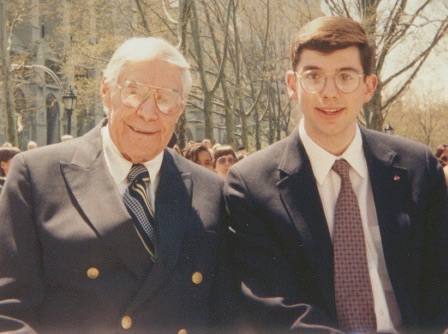
On April 27, 1997, Grant’s Tomb celebrated its Centennial and was rededicated as newspapers announced that following years of neglect, Grant’s Tomb was a monument once again.
You can watch the Grant’s Tomb Centennial commemoration here.
These images depict Grant’s Tomb in the 1990s before corrective action was taken and afterwards:
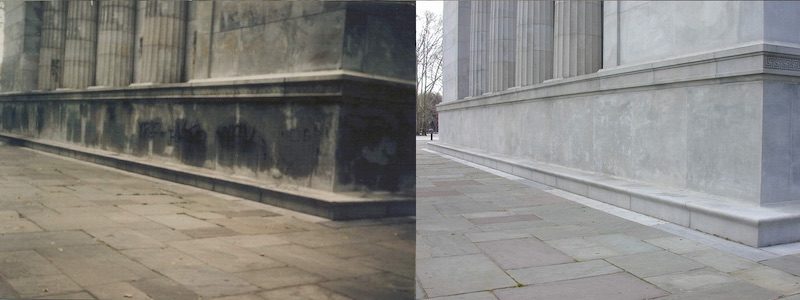
Eastern Wall Before and After
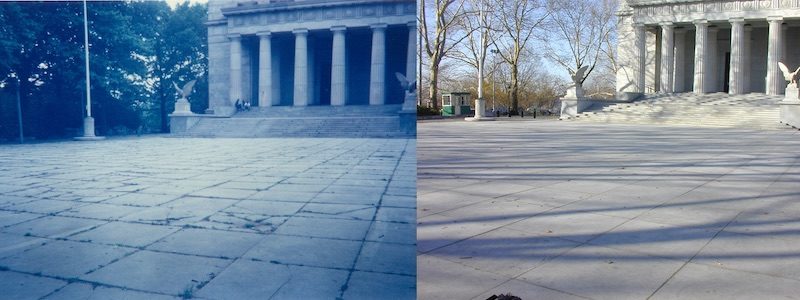
GT Plaza Before and After
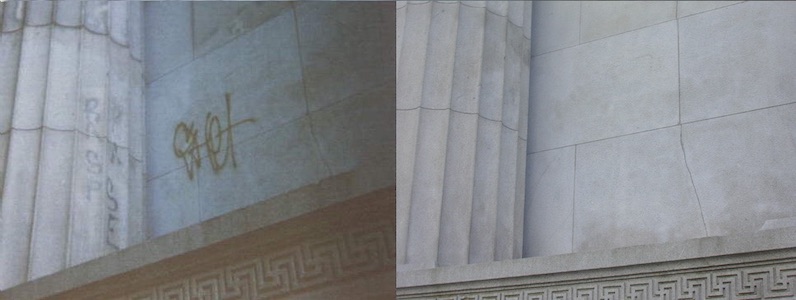
Northern Detail Before and After
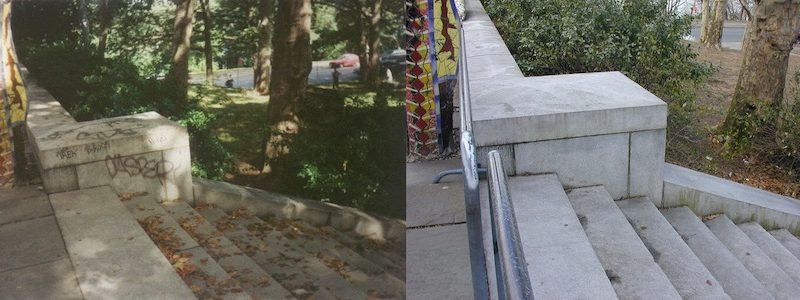
NW Rear Stair Before and After
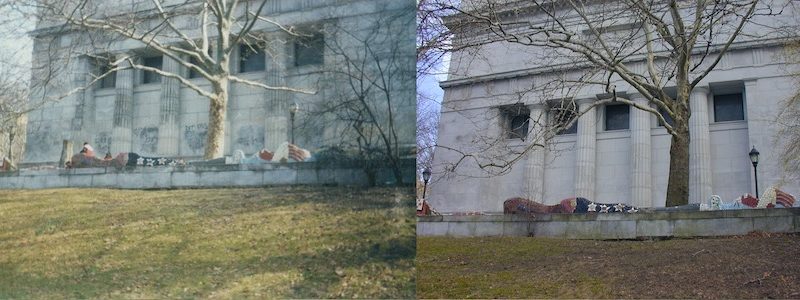
Western Facade Before and After
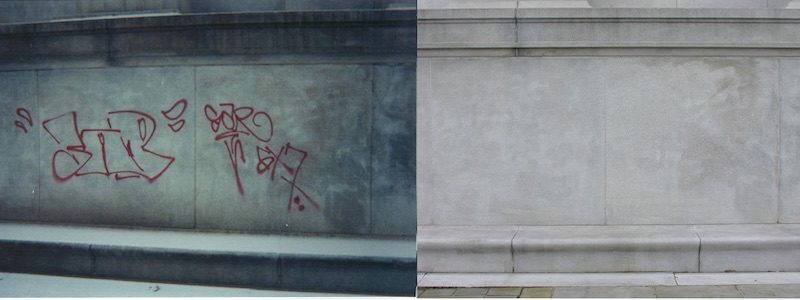
Western Wall Before and After
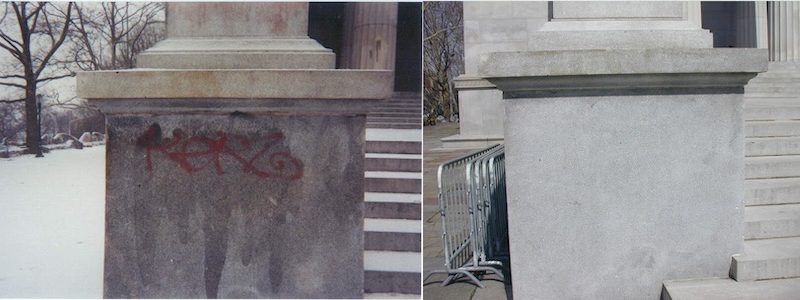
Western Ledge Before and After

Western Wall Before and After 2
Even following the Centennial restoration, the overlook pavilion across the street, which once housed the site’s public restrooms, remained in a serious state of disrepair, as it had for decades. It would take another 14 years for this situation to turn around. The structure was ultimately restored in 2011 with new facilities that included a gift shop, a presentation room, two single-user restrooms and additional office space for the NPS.
The following images show the pavilion before and after its restoration:
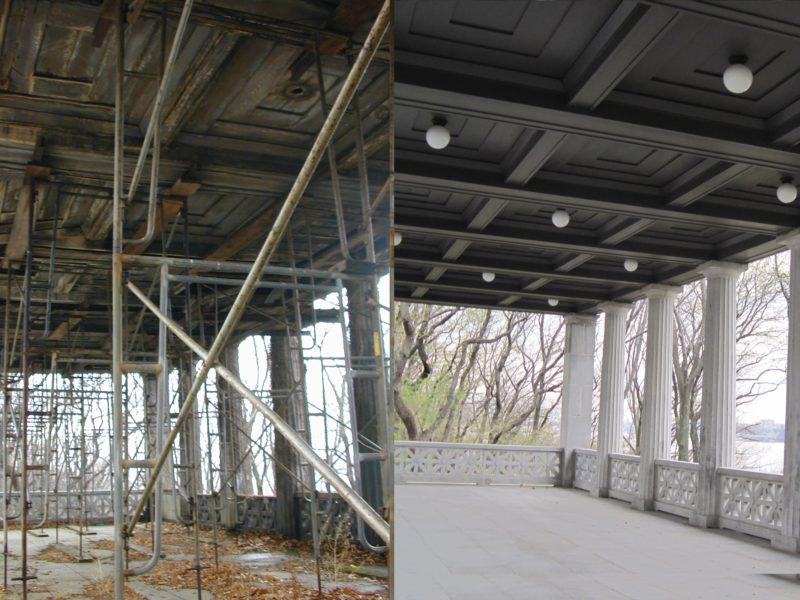
Upper Level - Before and After
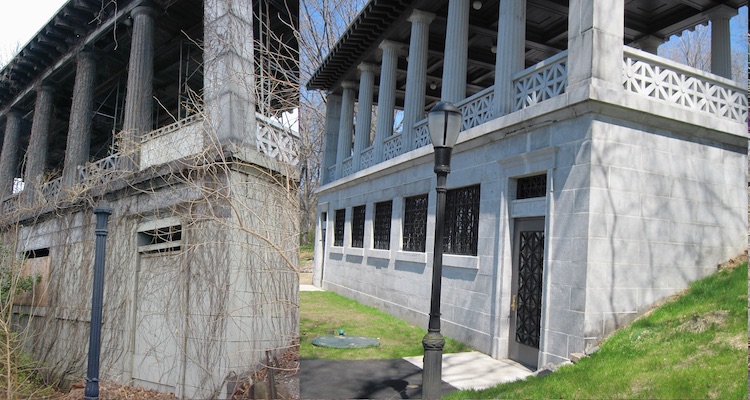
Lower Level - Before and After
Opening the Overlook Pavilion
On April 27, 2011, the long awaited reopening of the newly restored overlook pavilion across the street from Grant’s Tomb finally took place as part of the day’s Grant birthday commemoration. Adorned with red, white, and blue bunting and ribbon, the spruced up neoclassical structure was in brilliant form—a stark contrast to the state of disrepair that had characterized the site over the preceding four decades.
Following a brief reopening ceremony at 10 a.m. that day, the ribbon across the overlook was cut and the pavilion was officially open to the public.
Overlook Pavilion Reopening
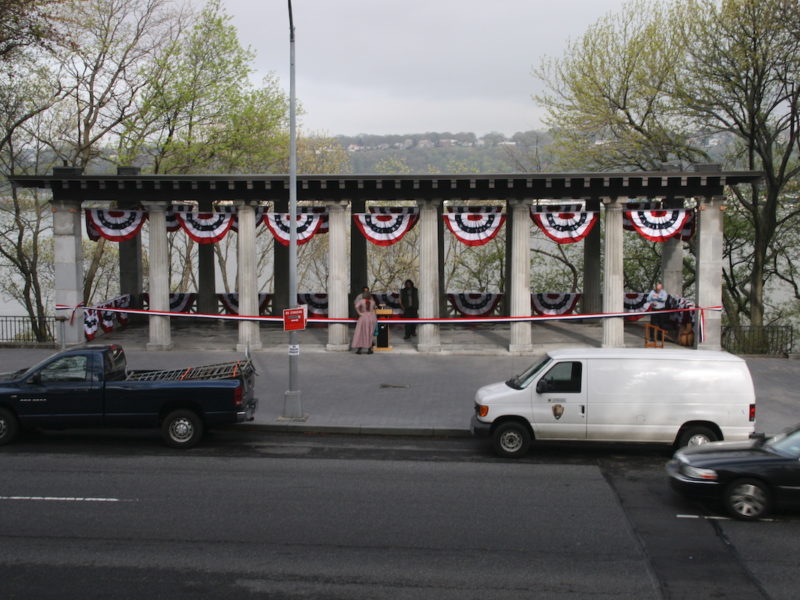
Pavillion Opening
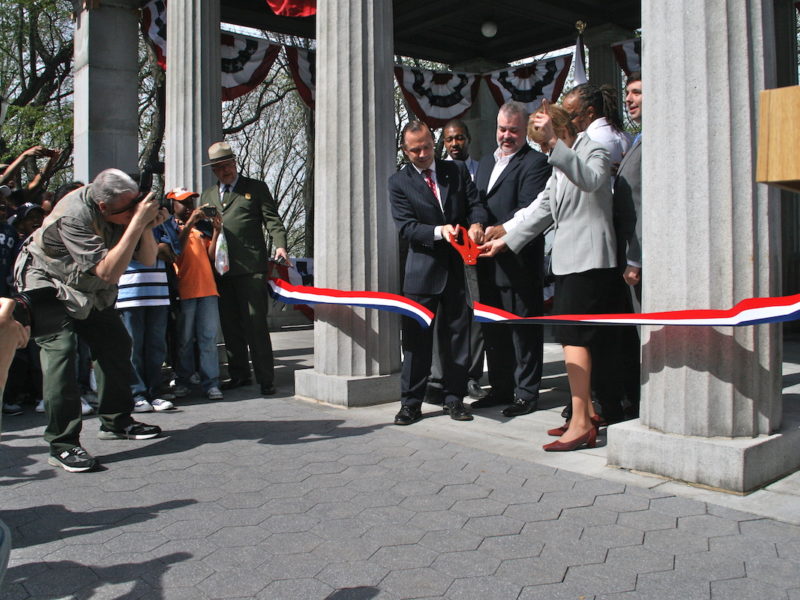
Pavillion Ribbon Cutting
For years prior to the reopening, the site had suffered from the lack of restrooms.The Tomb itself had come to house a gift shop and exhibits of a temporary nature—several historical panels with text and photos and display cases with artifacts—that were widely considered to detract from the reverent atmosphere originally intended for the Tomb.
In 2011, those were moved to the lower level of the overlook, except for the historical exhibit panels, which were replaced entirely and located in a new presentation room in the pavilion that has audio-visual equipment and seating for groups.
To point out these improvements, however, is not to overlook lingering problems at the site and preservation challenges that have arisen over the years following the monument’s centennial. Find out what remains to be done and how you can help!